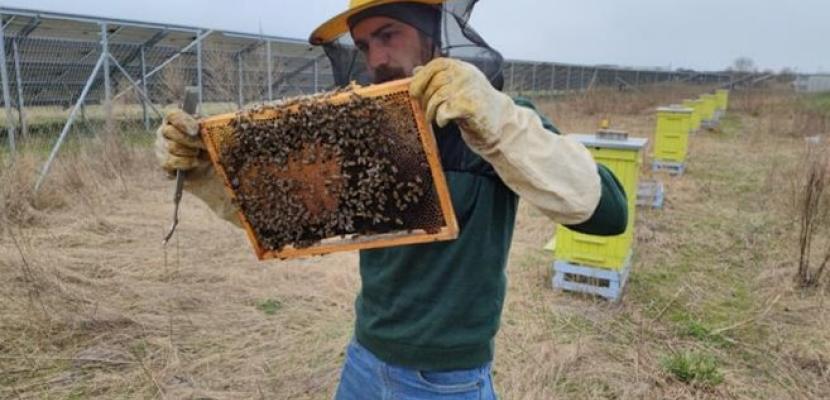
Development of apiaries and flower meadows in the area of photovoltaic farms

About this good practice
Polenergia implements the Environmental and Social Policy, the main objective of which is sustainable development as the foundation for wise business management. The practice aims to develop the Sulechów I Project's photovoltaic farm sites for agrophotovoltaics. The solar power plant consists of eight photovoltaic installations, with a total capacity of 8 MW. The photovoltaic farm occupies just half of the entire 16-hectare-plus Sulechów I development. Therefore, the decision was made to return the undeveloped land to nature and create flower meadows in the area of the farms and establish an apiary consisting of 10 beehives. Each bee colony consists of as many as 50,000 bees, which collect nectar and pollen from created flower meadows and other honey-producing plants found in the area. The farms not only run apiaries, but also support other insect species. Mounds made of stones and clay create an excellent place for the development of bumblebees and other ground insects. In addition, insect houses are set up on the farms to provide a place for other pollinating insects to develop. Through this land use, we are generating energy from renewable energy and contributing to biodiversity in the areas surrounding the PV farms. Honey harvested from the apiaries is used for employee use and is an example of real action to support biodiversity.
Expert opinion
Resources needed
Seeds for a flower meadow – about 20 kg per ha, 10 beehives, PLON apiary company
Evidence of success
In its first year the solar plant produced 8.2 GWh of energy, avoiding 7 tons of CO2 emissions. Apiaries at the farm produced 20 kg of honey, with future yields expected between 20-40 kg per hive. The project will be maintained at this level to avoid any displacement of native pollinator species. It maintains a balance to protect native pollinators and supports local biodiversity offering shelter for protected species. Polenergia is introducing flower meadows across at other photovoltaics farms
Potential for learning or transfer
The actions used in this practice can be implemented in other such projects in Poland. The potential for the development of large-scale PV farms, combined with flower meadows and apiaries, is high. It is also a great opportunity to support biodiversity and pollinating insects. By diversifying land use, we get a higher species richness of habitat. Energy from photovoltaic cells does not contribute to pollution, and thus does not negatively affect the occurrence of bees and other flora and fauna in the area. Establishing apiaries and flower meadows on PV farm sites takes advantage of the potential of free space. Beekeeping can also be an important source of livelihood for residents of non-urbanized areas. Due to its many advantages, it should be considered by other regions of Poland as a model of best practice that deserves time and financial investment, and it may also serve as an inspiration for other European countries in the future.
